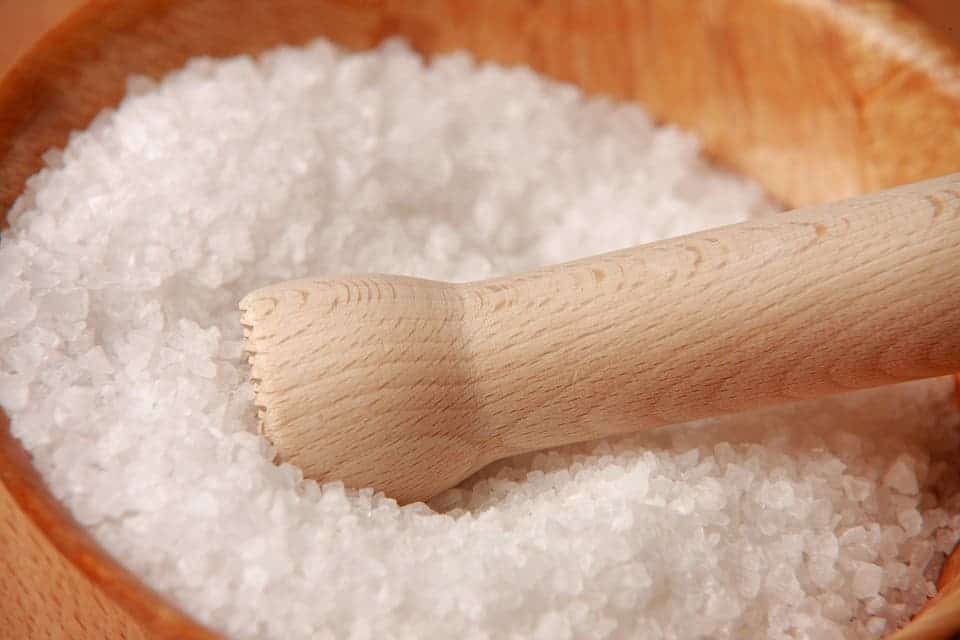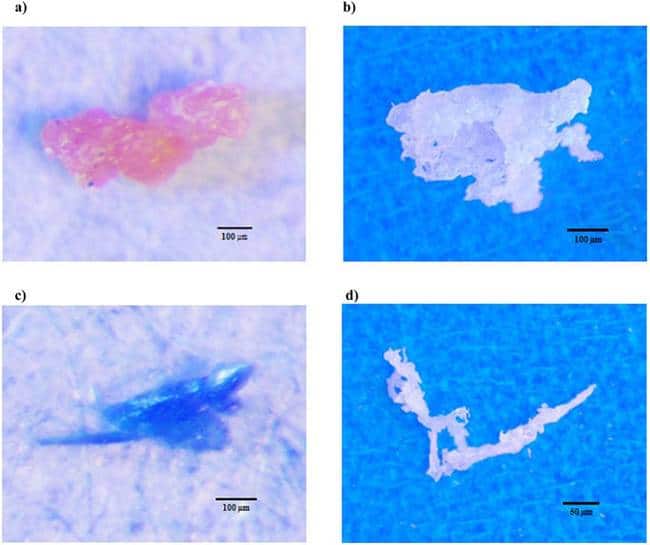A new study on 16 brands of sea salt found that all but one contained microplastics.

What goes around comes around. Every year, mankind dumps up to twelve million metric tons of plastic into the seas and oceans, in pieces all shapes and sizes, and it’s coming back to us.
It’s a strange thing, really, when you think about it — we’ve developed strong, durable plastic and then used it for all sorts of things which don’t require durability, like bags or bottles for instance. Because that plastic is so durable, it basically never disintegrates, which means that those pieces just stick around in the oceans, often being ingested by wildlife and traveling up the food chain. If a tiny fish ingests a tiny piece of plastic and then gets eaten by a bigger fish or a bird, the plastic piece will often be passed on. So the higher you go up the food chain, the more plastic you get, with top predators being at great risk. As a new study showed, it also gets to us.
The study reads:
“Due to their low density and slow degradation, plastics are becoming the chief cross-border contaminant that often travels far from their original source. Hence, micro plastics found in the salt samples of one country could have been produced by another country thousands of miles away.”
Aquatic toxicologist Ali Karami and his team from the Universiti Putra Malaysia wanted to see if some of this plastic ends up in our bellies, and they looked at a product growing in popularity: sea salt.
Sea salt is produced from the evaporation of seawater, rather than by being extracted from sedimentary deposits. It’s used for culinary purposes, as well as in cosmetics. Some people believe it offers a fuller taste than regular salt due to its coarser texture and different rate of dissolution. Whatever the case may be, sea salt is common in many parts of the world and is growing in popularity.
Karami and his colleagues studied 16 brands of sea salt from eight different countries including Malaysia, Australia, South Africa, France, Iran, Japan, Portugal and New Zealand. They dissolved and filtered the salt in their lab, finding a total of 72 particles of contaminants — most of which were plastics, followed by pigments (which may have also been plastics originally). The only ‘clean’ salt was the one from France, all other pieces containing plastics.

An expert in global ocean circulation and plastic pollution, Erik van Sebille from Utrecht University in the Netherlands, says that this is very bad news… but not really surprising. This week, ZME Science reported how a new study found that an island in the middle of the Pacific Ocean, once thought one of the most pristine places on Earth, is officially the most plastic littered surface on the planet. That’s despite no humans live there or ever did.
“Over the last few years, whenever scientists have gone out to look for plastic in the ocean, they have almost always found it. Whether on the remote ocean floor, in the ice in the Arctic, in the stomachs of seabirds and fish, or now in sea salt.
“Plastic in the ocean is an atrocity,” he adds, “a testament to humanity’s filthy habits, but we don’t know exactly what harm it does to marine life or to us.”
To be perfectly honest, the concentration is likely too low to cause any health problems, so you shouldn’t really panic and throw all your sea salt away. However, it’s a testament to the great wave of plastic pollution mankind is producing. Think for a moment that there is plastic in the sea salt produced from ‘pristine’ ocean water. Now think what kind of effect this pollution is having on oceanic wildlife.
This is no one’s direct fault, and yet we’re all to blame. We all consume plastic, we all throw it away. It’s also up to us to start making a difference.
Researchers conclude:
“The most common plastic polymers were polypropylene (40.0%) and polyethylene (33.3%). Fragments were the primary form of MPs [microplastics] (63.8%) followed by filaments (25.6%) and films (10.6%). According to our results, the low level of anthropogenic particles intake from the salts (maximum 37 particles per individual per annum) warrants negligible health impacts. However, to better understand the health risks associated with salt consumption, further development in extraction protocols are needed to isolate anthropogenic particles smaller than 149 μm.”
Journal Reference: Ali Karami, Abolfazl Golieskardi, Cheng Keong Choo, Vincent Larat, Tamara S. Galloway & Babak Salamatinia — The presence of microplastics in commercial salts from different countries. doi:10.1038/srep46173






